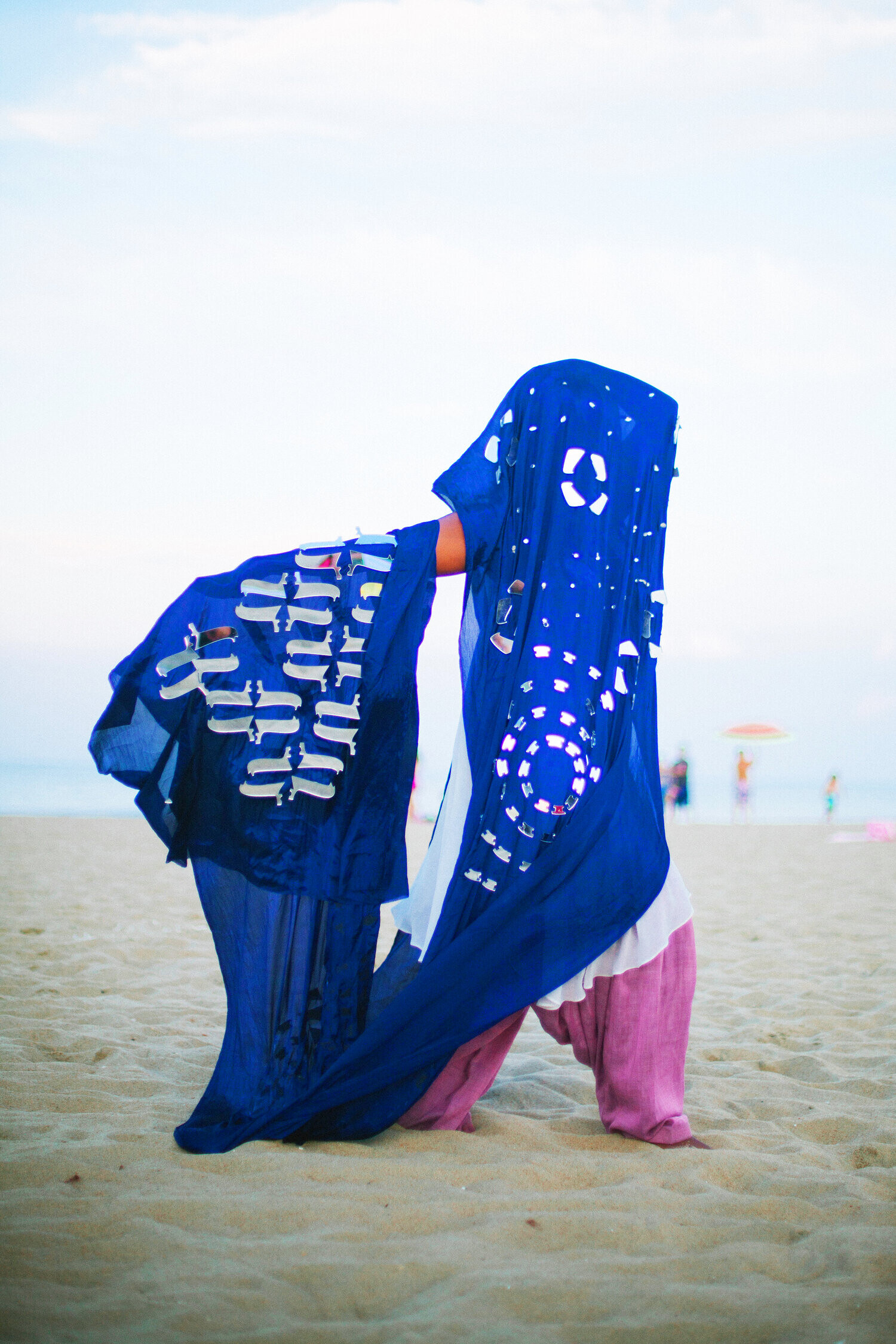An exhibition exploring womxn and non-binary people’s experiences of time within various kinds of migration and displacement
February 11–April 16, 2022
50 Orange Street
New Haven, Connecticut 06510
United States
Hours: Wednesday–Saturday 12–6pm
T +1 203 772 2709
info@artspacenh.org
Dyschronics is an exhibition that does not recognize clocks, linear progression, or chrono-logies. It is an antagonism to the “Western Hour” via interruptions, waiting, transitions, intervals, and in-between moments. It is a reconsideration of how moving bodies interact in space and time, across geographies, cultures, and identities, particularly those historically erased within migration data—namely womxn and non-binary folks. Acknowledging that the modern construction of time, composed of chronos and kairos, or quantitative and qualitative time, is an imposition, Dyschronics revels in temporalities that resist a linear, monolithic tempo. Instead, it turns to times that historian Ranajit Guha characterized as confrontational in his landmark essay “The Migrant’s Time” (1998), cultural theorist Mieke Bal later theorized as “heterochrony” (2008) or the clashing of times, and Miguel Á. Hernández-Navarro understands as dyschronys, or a “fourth time” (2011), beyond and resistant to the so-called “Western Hour.”
Dyschronics features the work of Carolina Caycedo, Emily Jacir, Baseera Khan, and Tsedaye Makonnen in reconfigurations of space-time through installation, sculptures, textiles, videos, film, and performances throughout the galleries of Artspace New Haven, and includes new commissions by Khan and Makonnen.
Carolina Caycedo’s Serpent River Book (2017) installation depicts Colombian, Brazilian, and Mexican communities as they encounter the displacing effects of industrialized and privatized river systems. Across the gallery, a serpentine book extends and folds environmental time beyond capitalist extractivism. Accompanying the book installation is Caycedo’s video To Stop Being a Threat and To Become a Promise (2017), which illuminates the expansive and cyclical diverse hydrographies such as the Colorado, the Yaqui, the Xingu, the Spree, and the Magdalena rivers throughout time for local and Indigenous communities.
Emily Jacir’s documentary letter to a friend investigates a crime before it occurs in her Palestinian neighborhood threatened by Israeli occupation through epistolary correspondence, archival research, and footage from the past decade. The documentary simultaneously anticipates and bears witness to displacement, creating a clashing of temporalities.
Baseera Khan’s seat sculptures created for and adjacent to Karaoke Spiritual Center of Love (2018) within their “seats” series, “Psychedelic Prayer Rugs” series (2017), and Reading Room, on purpose (2017) imagine spiritual and queer domestic and public sites wherein time is reclaimed for rest and contemplation. Artspace New Haven has commissioned Khan to create a new seat sculpture for Dyschronics.
Tsedaye Makonnen’s Astral Sea I, III, and IV (2019–2021) textiles and performances recall the transhistorical forced migrations of Black communities across the Atlantic Ocean and the Mediterranean Sea. The mirrors adorning the textiles invoke a bearing of the past into the present within Makonnen’s ritualized performances. Artspace New Haven has commissioned Makonnen to create a new performance with performers Jasmine Hearn and Dominique Duroseau in March 2022 for Dyschronics.
The exhibition is accompanied by a syncopated programming series including artist lectures, screenings, performances, and tours, in addition to a digital and printed catalog.
Dyschronics is supported by the Andy Warhol Foundation, CT Humanities, Mellon Foundation, and VIA Art Fund. The exhibition is organized by guest curator, Laurel V. McLaughlin, in collaboration with Artspace New Haven.
About Artspace New Haven Founded in 1987 by artists, we center community-building and education while providing a platform to present the work of visual artists in the city of New Haven. Artspace’s exhibition and commissioning programs encourage experimentation and civic discourse while fostering an appreciation for the vital role artists play in improving our community.



